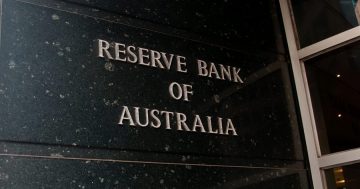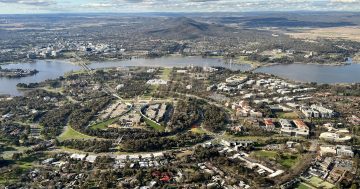
The hospitality industry has been one of the worst-affected sectors in the COVID-19 pandemic. Photo: File.
The ACT’s unemployment rate has jumped 1 percentage point to 4.2 per cent in April after the loss of 8,700 jobs, according to the latest labour force statistics which reflect the growing economic impact of COVID-19.
The new figures from the Australia Bureau of Statistics (ABS) show that the ACT’s total number of employed people dropped from 240,200 to 231,500 between March and April.
Nationally, the unemployment rate jumped from 5.2 per cent to 6.2 per cent in April, translating to 594,000 fewer Australians in a job, Prime Minister Scott Morrison said.
“This is a tough day for Australia. A very tough day,” Mr Morrison said.
“Almost 600,000 jobs have been lost. Every one of them devastating for those Australians, for their families, for their communities.”
But the rise in the unemployment rate was abated by the significant amount of people who decided to leave the labour force, the head of labour statistics at the ABS, Bjorn Jarvis, said.
“The large drop in employment did not translate into a similar-sized rise in the number of unemployed people because around 489,800 people left the labour force,” he said.
“This means there was a high number of people without a job who did not or could not actively look for work or were not available for work.”
In the ACT, 6,500 people left the labour force, which fell to 241,700 in April. However, Chief Minister Andrew Barr told Region Media that the strength of the ACT’s pre-COVID-19 economy means the Territory is in a strong position to weather the worst of the storm.
“The ACT went into the coronavirus crisis with the lowest unemployment rate in Australia [at] 2.9 per cent, the fastest rate of employment growth [at] 4.3 per cent, and an all-time record level of employment [of more than] 240,000 jobs. This puts the Territory in the strongest position in the nation to weather the storm,” he said.
“To support jobs, the ACT Government launched Jobs for Canberrans, a $20 million fund, last month to provide work opportunities for Canberrans in the casual or semi-skilled workforce who lost their jobs or have been significantly impacted [by] COVID-19. This initiative has seen people quickly transition into the ACT Public Service.”
It was economic interventionism from the ACT Government that allowed the territory to maintain the “lowest unemployment rate in Australia by a big margin”, Mr Barr said.
Nationally, youth unemployment also rose to almost 14 per cent, up from 11.5 per cent in March. The underutilisation rate, which combines the unemployment and underemployment rates, also reached a record high of 19.9 per cent.
Treasurer Josh Frydenberg confirmed that more than 6 million Australians are on the JobKeeper subsidy, while an extra 1.6 million people were on JobSeeker or Youth Allowance payments.
While the statistics have not been broken down by Treasury to state and territory level, if the national figures were translated to the ACT, it would mean more than 100,000 Canberrans are on the JobKeeper payment and an extra 26,700 are on JobSeeker or Youth Allowance.
The strong proportion of public sector workers in the ACT has helped the territory weather parts of the COVID-19 economic storm.
The ACT’s gross state product (GSP) is increasing in some sectors because of the role both the federal and state public service sectors are playing during the pandemic, Mr Barr said on Wednesday.
“The [drop in GSP] will be less than the rest of the nation because of the nature of our economy. Some areas of ACT GSP are actually growing rapidly – those in the public sector – as a result of the increase in activity,” he said.
“Services Australia, for example, needing to get through 600,000 applications they received for JobKeeper and JobSeeker. That sort of output that the public sector is delivering at the moment will partially offset some of the decrease in output you will see in hospitality, fitness and recreation.
“Public administration is about a quarter of the ACT’s GSP. That share will, in fact, increase over this period because of the decline of other areas.”.





















